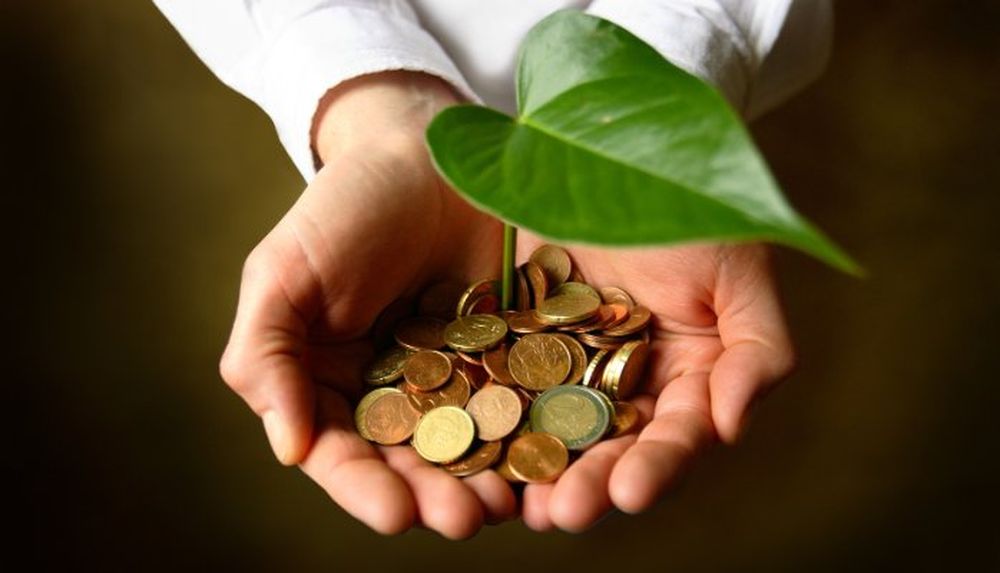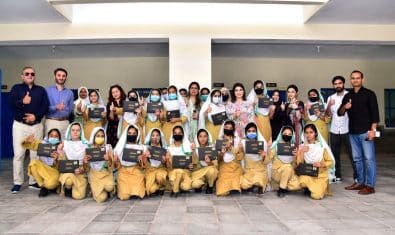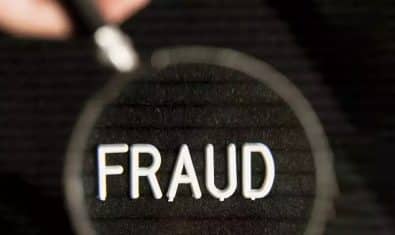Commercial banks and DFIs are encouraged to set up ‘green branches and offices’ with 50% or more of their energy needs from renewable energy sources (like installation of photovoltaic solar panels), including the use energy efficient lights and equipment along with utilization of technologies for efficient use of water and other resources.
The green branches/offices are designed to minimize waste, pollution (Air pollution, Water pollution, Indoor pollution, Noise) and environmental degradation.
Banks/DFIs should setup their branches and offices in such a way that their operations use minimum energy and other resources and have minimum impact on the environment as per their green business facilitation policy and strategy.
These instructions were issued by the State Bank of Pakistan under the title “Guidelines for Green Banking”. Banks and DFIs are asked to implement these guidelines within a year.
The banks/DFIs are themselves major users of energy through their head offices, regional offices and extended branch networks across the country. The air conditioning, computer systems, ATMs and other technological setups form a big chunk of resource utilization including electricity consumption by the banks/DFIs.
The improvements in the energy efficiency and resource efficiency technologies imply that the banks/DFIs may also reduce their operational costs through their resource efficiency measures. The conscious effort for environmental conservation may also provide insights for banks/DFIs to customize their products and services for such measures in the businesses and households of the clients.
Green Banking Office
In order to implement green banking, the management should assign a senior manager as Chief Green Banking Manager, in addition to his/her other responsibilities, to manage and supervise the activities of a Green Banking Office.
The Green Banking Office should be equipped with at least one fulltime staff (e.g. Green Banking Officer) and additional staff, if required, for coordination and implementation of bank/DFI’s green activities.
The Green Banking Officer should be well versed with environmental risk assessment and monitoring, green product development, and operational improvement measures to reduce resource consumption.
Paperless Banking Operations
The implementation of paperless banking requires the banks/DFIs to identify the need and types of documents which are to be stored electronically, go through a planning process for deciding the data storage disks, scanners, Optical Character Recognition (OCR) applications, data storage file structures, searching/retrieval applications and data encryption/backup planning etc.
The banks/DFIs should identify the documents for conversion to electronic formats through an institution wide consultative process.
The banks may decide to convert all documents/papers for conversion and storage in electronic forms except the legal documents or key documents which may serve as evidence in a court of law.
For internal communications and operational management of branches/offices, the banks/DFIs should develop policies for online communications, where possible, as a convenient and fast alternative to printed documents.
The banks/DFIs should seek external technical expertise for devising an efficient and cost effective system with proper installations of IT requirements for implementation of paperless operations.
The banks/DFIs should regularly sensitize their staff regarding negative environmental implications of excessive usage of paper and environmental responsibility of banks/DFIs with a view to build a culture of consciousness towards use of paper and printing.
In areas where full adoption of paperless environment is not possible and/or desirable, the banks/DFIs may educate their staff to reduce use of paper through such practices as printing of absolutely necessary documents and using both sides of paper etc.
Paperless Banking Services
In terms of dealings with the clients, the banks/DFIs should adopt measures to deliver customer services through electronic means. This includes sending e-statements of bank accounts, installing ATMs, providing online checking facilities, allowing online payments of bills and allowing online submission of customer applications etc.
Green IT Infrastructure: The banks/DFIs should deploy energy efficient IT equipment and install systems for saving energy from idle running of IT equipment through such techniques as remote turn of equipment etc.
Renewable Energy based ATMs: The banks/DFIs may take measures to convert their ATMs to solar or other renewable energy sources, provided it is financially plausible conversion.
Renewable Energy based Branches/Offices: In addition to the green branches/offices, the banks/DFIs may deploy, if financially plausible, renewable energy based equipments in their ‘nongreen’ branches/offices to reduce their reliance on fossil fuels/grid electricity.
Resource Efficiency Measures: The banks/DFIs should take, where viable, measures to adopt resource efficiency in their branches/offices similar to the ones adopted in their green branches/offices. These measures should, in fact, facilitate banks/DFIs to identify and designate green branches/offices in a gradual manner.
Waste Reduction: The banks/DFIs can adopt practices to reduce waste (paper, packaging, plastics, electronic equipment, print cartridges, etc.) and recycle these materials.






















Green Banking Main : Jaha Jaha Branch Ho Waha Waha Tree Ho, Road Bara Ho :
Bank K Andar Pura GARDEN Ho : Free Wifi Ho : Her Transaction Par Neem Ka Patta Mile :
Wao What A Green Bank : p
Neem k patta ni eucalyptus k patty milny sari transactions per :p Free wifi :D